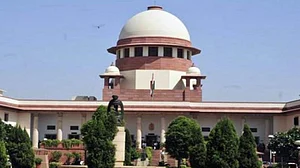
Name: High court
The High Courts of India, established under the authority of the Indian Constitution, serve as the highest appellate courts in each state and union territory. Their primary roles include hearing appeals from subordinate courts and adjudicating writ petitions under Articles 226 and 227 of the Constitution, which constitute their original jurisdiction.
Each state is divided into judicial districts overseen by a district judge and a sessions judge, responsible for civil and criminal cases, respectively. Below them are various courts of civil jurisdiction, known by different names across states, which operate within specified territorial or subject matter limits.
High court judges are appointed by the President of India in consultation with the Chief Justice of India and the Governor of the respective state, as per Article 217 of the Constitution. Each high court is headed by a Chief Justice and may establish permanent benches in regions with significant caseloads. Additionally, circuit benches may be set up in smaller states or regions to manage periodic caseloads.
The Madras High Court, founded on June 26, 1862, holds the distinction of being India's oldest high court. Some high court buildings, such as the Bombay High Court and Punjab and Haryana High Court, have been recognized as UNESCO World Heritage Sites due to their architectural significance.
Unlike state courts in other federations, the organization and operations of India's high courts are uniformly regulated by the Constitution, ensuring consistency across the country. This contrasts with federations like the United States, where state courts operate under separate state constitutions and laws, resulting in greater variation in their structures and functions.
High courts are headed by chief justices and staffed by judges appointed by the President of India in consultation with the Chief Justice of India and state governors. The number of judges in a court is determined by case load and disposal rates. Some high courts have permanent benches in different locations to handle cases from specific regions.
The following are the 25 high courts in India, sorted by year established, name followed by the jurisdiction.
1862 - Bombay High Court - Goa, Dadra and Nagar Haveli and Daman and Diu, Maharashtra
1862 - Calcutta High Court - Andaman and Nicobar Islands, West Bengal
1862 - Madras High Court - Tamil Nadu, Puducherry
1866 - Allahabad High Court - Uttar Pradesh
1884 - Karnataka High Court - Karnataka
1916 - Patna High Court - Bihar
1928 - Jammu & Kashmir and Ladakh High Court - Jammu and Kashmir, Ladakh
1936 - Madhya Pradesh High Court - Madhya Pradesh
1947 - Punjab and Haryana High Court - Chandigarh, Haryana, Punjab
1948 - Gauhati High Court - Arunachal Pradesh, Assam, Mizoram, Nagaland
1948 - Orissa High Court - Odisha
1949 - Rajasthan High Court - Rajasthan
1956 - Kerala High Court - Kerala, Lakshadweep
1960 - Gujarat High Court - Gujarat
1966 - Delhi High Court - Delhi
1971 - Himachal Pradesh High Court - Himachal Pradesh
1975 - Sikkim High Court - Sikkim
2000 - Chhattisgarh High Court - Chhattisgarh
2000 - Jharkhand High Court - Jharkhand
2000 - Uttarakhand High Court - Uttarakhand
2013 - Manipur High Court - Manipur
2013 - Meghalaya High Court - Meghalaya
2013 - Tripura High Court - Tripura
2019 - Andhra Pradesh High Court - Andhra Pradesh
2019 - Telangana High Court – Telangana
As of 2024, there are 25 high courts in India with a total of 1,114 sanctioned judge positions.
The jurisdiction and powers of High Courts in India are delineated by various sources, including constitutional provisions, the Letters Patent, Acts of Parliament, State Legislature Acts, and specific procedural codes like the Indian Penal Code, Criminal Procedure Code, and Civil Procedure Code.
To qualify for appointment as a judge of a High Court in India, a person must be a citizen of India and meet one of the following criteria: they should have either held a judicial office in the territory of India for at least ten years or been an advocate of a High Court (or High Courts successively) for at least ten years. Unlike the appointment criteria for the Supreme Court, the Constitution does not include provisions for appointing distinguished jurists as High Court judges. Furthermore, there is no minimum age requirement stipulated by the Constitution for individuals aspiring to be appointed as judges of a High Court.
The Constitution of India contains provisions aimed at safeguarding the independence and impartiality of High Courts: High Court judges are appointed by the President in consultation with the judiciary, ensuring appointments are based on merit rather than political considerations. Judges enjoy security of tenure and can only be removed under specific constitutional grounds. Their service conditions, including salaries and allowances, are fixed, and charged on the Consolidated Fund of the State, ensuring financial autonomy. Parliamentary interference in their conduct is barred, except during impeachment proceedings. Retired judges are restricted from practicing in Indian courts, except the Supreme Court and other High Courts, to prevent conflicts of interest. High Courts possess contempt powers to uphold their authority and decisions. The Chief Justice of a High Court has the freedom to appoint court staff independently. Additionally, Parliament cannot diminish the jurisdiction and powers of High Courts, although it may extend them.
These measures collectively uphold the independence of High Courts, ensuring they operate impartially and effectively uphold justice in India's legal system.
.jpg?auto=format%2Ccompress&fit=max&format=webp&w=300&dpr=1.0)
.jpg?auto=format%2Ccompress&fit=max&format=webp&w=300&dpr=1.0)

.png?auto=format%2Ccompress&fit=max&format=webp&w=300&dpr=1.0)


.png?auto=format%2Ccompress&fit=max&format=webp&w=300&dpr=1.0)














